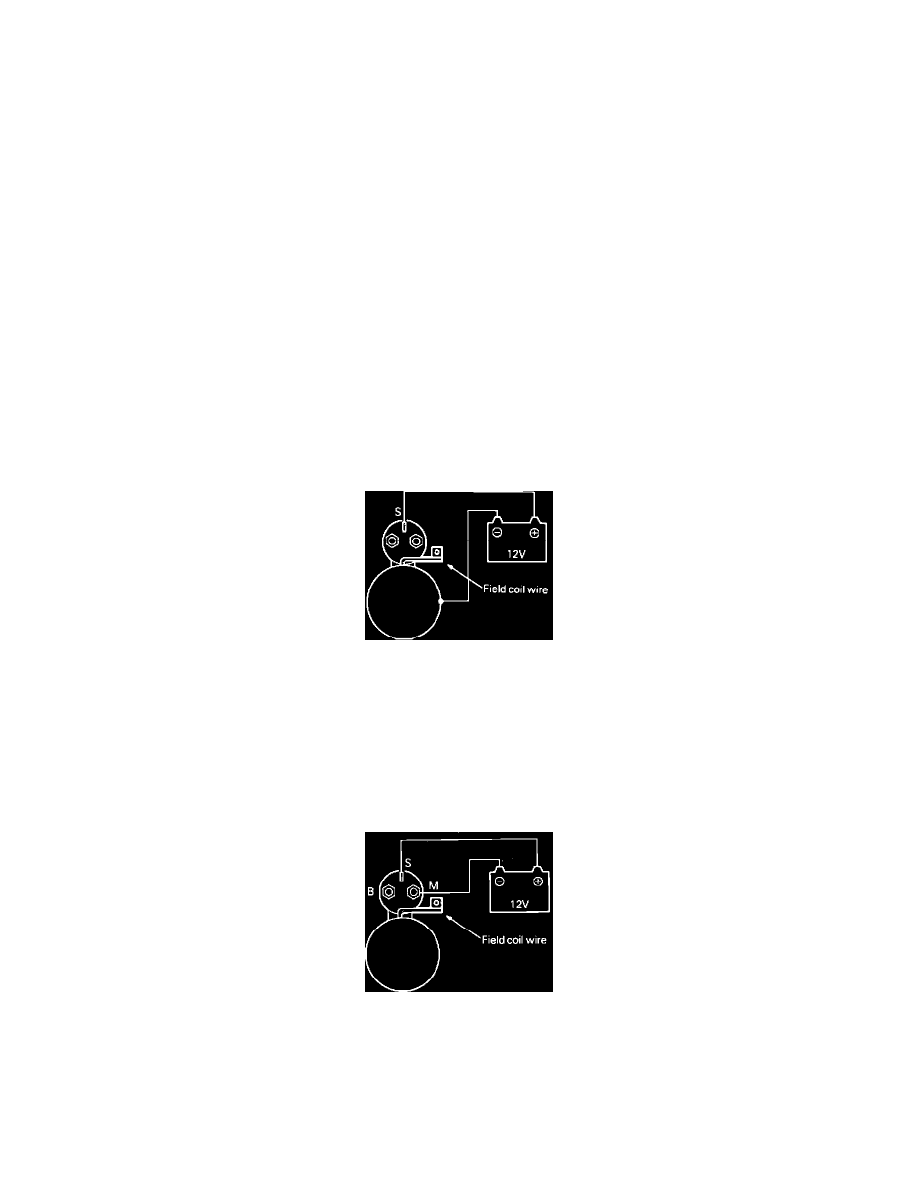Laser FWD L4-1997cc 2.0L DOHC Turbo (1993)

Starter Drive/Bendix: Testing and Inspection
Bendix Drive Fails Diagnosis
When a Bendix type drive does not engage the cause is usually one of three things: The drive spring is broken, one of the drive spring bolts has
sheared off, or the screw's shaft threads will not allow the pinion to travel toward the flywheel. In the first two cases, remove the drive by unscrewing the
setscrew under the last coil of the drive spring and replace the broken parts. Gummed or rusty screw shaft threads are the most common causes of Bendix
drive failure to disengage or to mesh properly and are easily cleaned with a little kerosene or steel wool. Lubricate the drive with light oil sparingly, and
be sure the flywheel housing has adequate ventilation. There is usually a breather hole in the bottom of the flywheel housing which should be open.
Clutch Drive Fails Test
The overrunning clutch type drive seldom becomes so worn that it fails to engage since it is directly activated by a fork and lever. The only thing that
is likely to happen is that, once engaged, it will not turn the engine because the clutch itself is worn out. A much more frequent difficulty and one that
rapidly wears ring gear and teeth is partial engagement. Proper meshing of the pinion is controlled by the end clearance between the pinion gear and the
starter housing or pinion stop, if used.
On some starters, the solenoids are completely enclosed in the starter housing and the pinion clearance is not adjustable. If the clearance is not correct,
the starter must be disassembled and checked for excessive wear of solenoid linkage, shift lever mechanism, or improper assembly of parts.
Failure of the overrunning clutch drive to disengage is usually caused by binding between the armature shaft and the drive. If the drive, particularly the
clutch, shows signs of overheating it indicates that it is not disengaging immediately after the engine starts. If the clutch is forced to overrun too long, it
overheats and turns a bluish color. For the cause of the binding, look for rust or gum between the armature shaft and the drive, or for burred splines.
Excess oil on the drive will lead to gumming, and inadequate air circulation in the flywheel housing will cause rust.
Overrunning clutch drives cannot be overhauled in the field, so they must be replaced. In cleaning, never soak them in a solvent because the solvent
may enter the clutch and dissolve the sealed-in lubricant. Wipe them off lightly with kerosene and lubricate them sparingly with SAE 10 or 10W oil.
Magnetic Switch Hold In Test
Fig. 4 Magnetic Switch Hold In Test
1.
Disconnect field coil wire from terminal M of switch.
2.
Connect a 12 volt battery between terminal S and starter body.
CAUTION: This test must be performed quickly to prevent coil from burning.
3.
If pinion remains out, switch is operating correctly.
4.
If pinion moves in, hold-in circuit is open. Replace magnetic switch.
Magnetic Switch Pull In Test
Fig. 3 Magnetic Pull In Test
1.
Disconnect field coil wire from M-terminal.
2.
Connect a 12 volt battery between terminals S and M.
3.
If pinion moves out, then pull in coil is good.
4.
If pinion does not move out, replace magnetic switch.
Magnetic Switch Return Test
